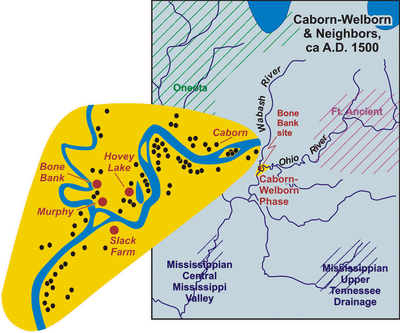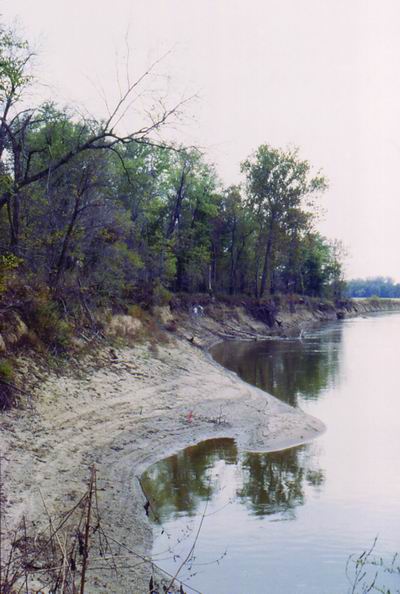
| The Bone Bank archaeological site, named by historic Wabash River travelers for the Mississippian cemeteries eroding from the riverbank, was the locus of Indiana's first archaeological excavations - in 1828. The primary component represents one of the largest villages of the protohistoric Caborn-Welborn culture (A.D. 1400-1700). Although long considered destroyed, riverbank surveys and test excavations in the 1990s revealed buried midden deposits and several surviving pit features. |  |
| Geomorphic reconstruction of the site remnant guided Indiana's first state-funded rescue excavations. Stratigraphic comparisons of radiocarbon dates, botanical remains, ceramics, and fabric impressions show limited temporal variation within the recovered assemblages. Intersite comparisons reveal temporal distinctions within the Caborn-Welborn phase. Comparisons of plant foods and fabrics distinguish four Caborn-Welborn sites from earlier Mississippian sites. | |
 |
|
| Enter
Site |
Bone Bank, Posey County, Indiana |
|
|
|
| Text and images from: | |
|
"Overview of the Bone Bank Archaeological Project, Posey County, Indiana: Rescue Investigations at a Late Mississippian Site." Poster presented at the 69th Annual Meeting of the Society for American Archaeology, Montreal, Canada, by:
|
|
| Website designed and coded by: | |
|
|
|
|
|
|
|
|